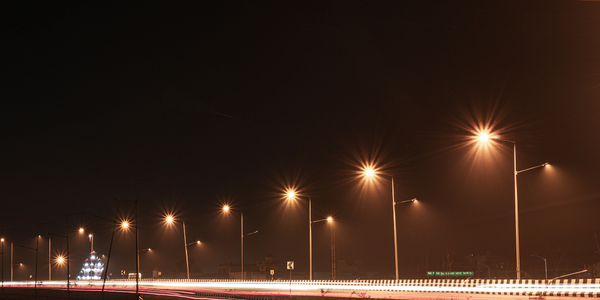Download PDF
Connected Street Lighting in Los Angeles

Technology Category
- Functional Applications - Remote Monitoring & Control Systems
Applicable Industries
- Cities & Municipalities
Applicable Functions
- Maintenance
Use Cases
- Smart Lighting
The Challenge
The 215,000 street lights in Los Angeles include more than 400 different styles distributed across 7,500 miles of roadway. Maintenance has traditionally depended on crews who scout the streets at night to identify outages— that, and calls from citizens. The bureau handles 40,000 such calls per year. They needed to find new technology that could improve customer service, make people feel safer, and create a more livable city.
The Customer
Los Angeles
About The Customer
Los Angeles
The Solution
After piloting systems from several different managers, street lighting directory Ed Ebrahimian selected Philips CityTouch, “the best product at the lowest price.”
CityTouch capabilities that helped decide Ebrahimian included remote monitoring, automatic notification of outages and other events, easy installation and simple commissioning, accurate lighting asset information, integration with the bureau’s existing management systems, and futureproofing through software as a service delivery.
Technology Deployed:
• CityTouch software
• CityTouch connector node
CityTouch capabilities that helped decide Ebrahimian included remote monitoring, automatic notification of outages and other events, easy installation and simple commissioning, accurate lighting asset information, integration with the bureau’s existing management systems, and futureproofing through software as a service delivery.
Technology Deployed:
• CityTouch software
• CityTouch connector node
Quantitative Benefit
Related Case Studies.

Case Study
Turning A Stadium Into A Smart Building
Honeywell created what it called the “intelligent system” for the National Stadium in Beijing, China, turning the venue for the opening and closing events at the 2008 Summer Olympics into a “smart building.” Designed by highly controversial artist Ai Weiwei, the “Bird’s Nest” remains one of the most impressive feats of stadium architecture in the world. The 250,000 square meter structure housed more than 100,000 athletes and spectators at a time. To accommodate such capacity, China turned to Honeywell’s EBI Integrated Building Management System to create an integrated “intelligent system” for improved building security, safety and energy efficiency.
.png)
Case Study
Smart Street Light Network (Copenhagen)
Key stakeholders are taking a comprehensive approach to rethinking smart city innovation. City leaders have collaborated through partnerships involving government, research institutions and solution providers. The Copenhagen Solutions Lab is one of the leading organizations at the forefront of this movement. By bringing together manufacturers with municipal buyers, the Copenhagen Solutions Lab has catalyzed the development and deployment of next-generation smart city innovations. Copenhagen is leveraging this unique approach to accelerate the implementation of smart city solutions. One of the primary focus areas is LED street lighting.

Case Study
Buoy Status Monitoring with LoRa
The Netherlands are well-known for their inland waterways, canals, sluices and of course port activities. The Dutch Ministry of Infrastructure indicates that there are thousands of buoys and fixed items in and near water environments that would profit from IoT monitoring. One of the problems with buoys for example, is that they get hit by ships and the anchor cable breaks. Without connectivity, it takes quite some time to find out that something has happened with that buoy. Not to mention the costs of renting a boat to go to the buoy to fix it. Another important issue, is that there is no real-time monitoring of the buoys at this moment. Only by physically visiting the object on the water, one gains insight in its status.

Case Study
China Mobile Smart Parking
Smart Parking, powered by NB-IoT technology, is making it easier for drivers to find free parking spots. Cities can better manage their parking assets and maximize the revenue available to them as a result. Drivers searching for parking create congestion and pollution by circling and hunting for available parking. Smart Parking services are able to significantly ease these problems by guiding a driver directly to a parking space.

Case Study
Barcelona Case Study
Barcelona’s heavy traffic and its associated high levels of pollution were the primary factors that motivated some companies and universities to work on strategies for improving traffic in the city centre. Bitcarrier is one of the technologies involved in the In4Mo Project, whose main objective is to develop the applications that form the core of smart mobility, one of the fundamental pillars of the smart city concept.





